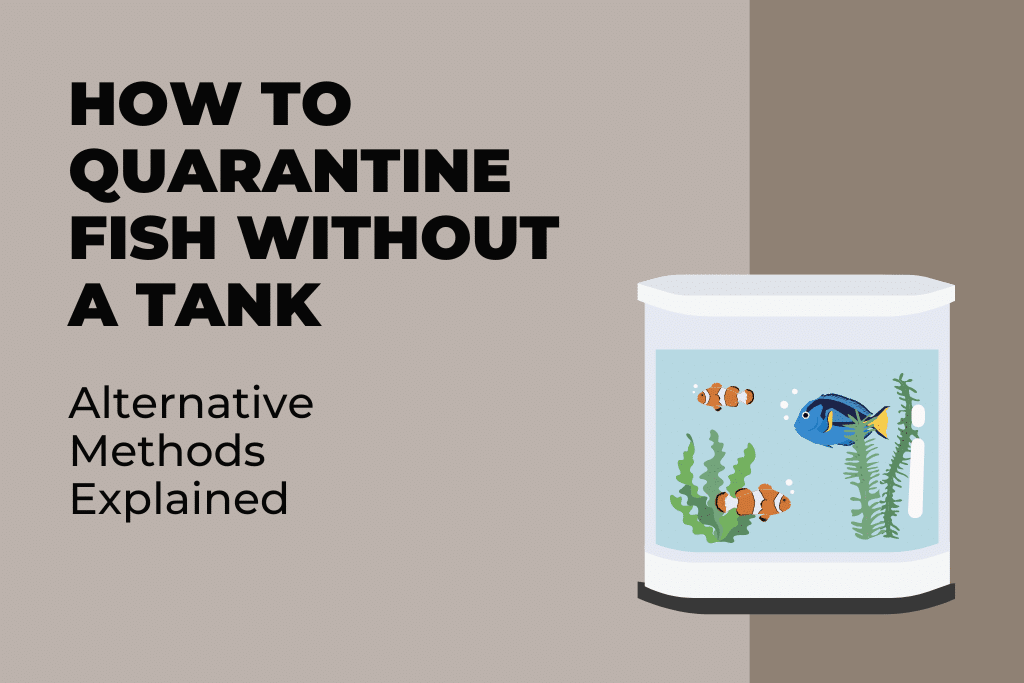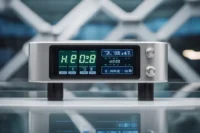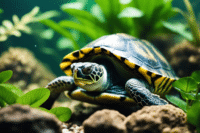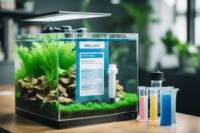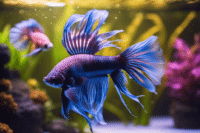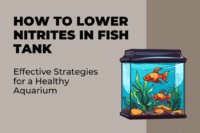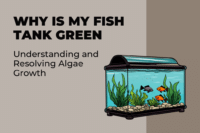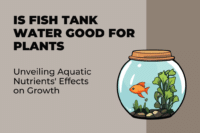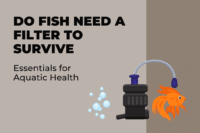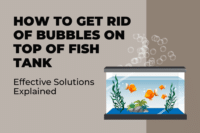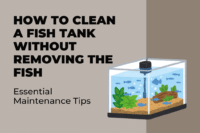Quarantining new or sick fish is essential in creating and maintaining a pristine aquarium ecosystem, helping prevent diseases and parasites from invading other aquarium inhabitants. Unfortunately, however, aquarists who lack an additional tank to act as quarantine area face an additional hurdle; there are effective techniques available that enable quarantining without tanks; this way ensuring both their wellbeing and that of your ecosystem!
Utilizing alternative quarantine methods like using food grade containers for fish quarantine can be just as successful as keeping separate tanks for this process. By creating an environment conducive to monitoring and treating the fish in these alternative quarantine containers, aquarists can ensure smooth transition for newly introduced or recovering from illness fish alike. Aquarists using such alternative approaches can ensure safe and healthy quarantine processes without needing dedicated tanks as dedicated storage solutions are often impractical or unnecessary.
Key Takeaways
- Quarantining helps maintain aquarium health by isolating any new or sickly fish from an aquarium’s population.
- Quarantining containers such as buckets can serve effectively as temporary quarantine spaces while proper water conditions and care play an essential part in its success.
Understanding Quarantining
Quarantining is an integral component to maintaining aquatic life within an aquarium environment. The practice serves to separate out new or sick fish in order to limit disease transmission among other inhabitants and stop spread of parasites among fish populations.
Quarantine serves a crucial function, protecting the ecosystem of its host tank by isolating newly introduced or potentially sick fish before they’re introduced back into it. Key objectives:
Identification of Disease or Parasites: During this phase, new fish should be closely observed for any unusual behaviors or visible indicators of illness that could signal disease or parasitism.
Preventing infections: By isolating new and sick fish, quarantine reduces the risk of transmitting pathogens to existing aquatic populations.
Treatment: Fish that show signs of illness can be treated without disrupting other fish or the balance of a main tank.
Differentiation Between Quarantine And Main Tank
Quarantine setups differ significantly from main tanks in several ways:
Size and Complexity: Quarantine tanks tend to be simpler than their main tanks in terms of size and complexity; without decorations or substrate, keeping a quarantine tank clean should become simpler, and any necessary treatment procedures easier.
Filtration and heating equipment might be kept simple in order to preserve quarantined fish health, and focus on essential functions for their wellbeing.
Monitoring and Maintenance: Water parameters in the quarantine area must be closely monitored in order to provide ideal conditions for recovery or adaptation. Adjustments may need to be made frequently in order to achieve optimal conditions that promote healing or adaptation.
Implementation of an intensive quarantine protocol not only ensures the well-being of newly introduced or sick fish but also benefits the collective health of an aquarium community.
Establish A Temporary Quarantine Space
Establishing a quarantine space without using traditional tanks requires selecting an ideal container, providing any required accessories, and creating an atmosphere which ensures fish safety.
Selecting The Appropriate Container
Quarantine containers should be clean plastic containers or buckets that will comfortably house fish during their quarantine period, without leaving behind residues and provide enough room to comfortably house all species present.
Plastic Container: Choose food-grade containers free from chemical use; for ultimate fish health.
Bucket: Consider one with an attachment cover so your fish won’t escape during transport or handling. Essential Equipment Having essential tools on hand during their temporary setup is imperative to their wellbeing.
Heater: For optimal temperatures and thermometer monitoring, a fully submersible heater with thermometer should be utilized. Aeration: Install an air pump for sufficient oxygen levels in your aquarium environment. And finally filtration – using an easily moveable sponge filter is ideal as this provides gentle care on fish populations.
Make sure that all equipment fits within the size constraints of the container to prevent overwhelming its space.
Building A Secure Environment
Establish a healthy quarantine environment:
Use a water conditioner to filter chlorine and chloramine out, while closely evaluating water parameters to maintain quality. Adjust as necessary as needed in order to achieve consistency of quality water supply.
By carefully applying these elements, one can successfully create a temporary quarantine space to safeguard their aquatic pets’ wellbeing.
Maintaining optimal water conditions
Quarantining fish without using traditional tanks requires optimizing water conditions in an effective and secure manner, including monitoring water parameters closely, regularly changing out water supplies, and simulating aquarium conditions as closely as possible during quarantine period – all the while protecting fish health during that timeframe.
Monitoring Water parameters.
As water must remain balanced at all times for proper health reasons, testing should take place regularly to maintain optimal levels of pH, nitrates, and ammonia in its ecosystem. Stable pH levels between 6.5-8.2 are generally recommended; specific ranges may depend on species. Nitrate levels must remain below 20ppm for the healthiest environment possible.
Setting an ongoing testing schedule will assist in early identification and prompt remedial action if any fluctuations arise, which is essential in providing timely intervention when required.
Water Changes
Implementing regular, dechlorinated water changes is vital to keeping fish health. A general guideline suggests changing 10-15% of your aquarium water every few days (though this number could change depending on fish species or treatments used), though this depends entirely on individual circumstances and treatments used.
Frequency of Visit: Every few Days and Amount: 10-15% of Water intake
Care must be taken to ensure the new water reaches the proper temperature and free from harmful chemicals.
Adjusting Water conditions
Adjusting water conditions often involves adding aquarium salt in order to prevent or treat certain diseases in fish, although care must be taken with its usage so as to be suitable for each specific species and health condition of each individual fish. Furthermore, maintaining consistent temperature shifts between tanks is crucial as dramatic fluctuations could stress out fish significantly.
Aquarium Salt should be added according to fish species requirements and compatibility, while Water temperature needs should remain consistent within its main tank.
Through monitoring, changes, and adjustments of water conditions, the quarantine process provides protection for both new and established aquatic life under aquarist care.
Preserving Quarantined Fish in Your Aquarium
Successful quarantine of fish without a dedicated tank relies on meticulous feeding practices, close observation and monitoring, and the effective management of stress and illness. It’s essential to maintain a controlled environment to support the health of new fish during this critical period.
Feeding Practices
During quarantine, it’s crucial to feed new fish a balanced diet that strengthens their immune system but does not contaminate the water. Feed them high-quality food in small quantities to lessen waste, typically twice a day. Overfeeding can lead to poor water quality, which is detrimental in a quarantine setting.
Observation and Monitoring
Regular observation can detect signs of illness early, which is key to successful treatment. Twice daily checks should be made for changes in behavior, such as lethargy or rubbing against surfaces, which can indicate stress or illness. Monitoring should also include testing water parameters to ensure they remain within safe limits.
Managing Stress and Illness
Reducing stress in quarantined fish is vital, as stress can compromise immune responses, making them more susceptible to illness. If signs of illness appear, appropriate treatments must be administered promptly. These might include antibiotic or antifungal medications. Regular water changes help to remove harmful substances and medications after treatment, maintaining a healthy environment for recovery.
Integrating Fish into the Main Tank
Quarantining fish without an aquarium involves meticulous feeding practices, close observation and management of stress or illness symptoms as well as maintaining an ideal environment to safeguard newcomers during this critical stage of their lives. Dedicated quarantines should only be attempted under specific conditions outlined by veterinarians or researchers to guarantee success in quarantining of new arrivals.
Feeding Practices
Proper feeding practices in quarantine environments are vitally important, providing new fish with a diet designed to strengthen their immune systems without polluting water quality. Use high-quality food in small portions twice per day so as to minimize waste production; overfeeding could result in water quality deterioration which would be disastrous in this setting.
Observation And Monitoring Solutions Provided.
Regular observation can detect early symptoms of illness and ensure successful treatments. Twice daily checks should include observations for changes in behavior like lethargy or rubbing against surfaces which might signal stress or illness, along with testing water parameters to make sure they stay within safe limits.
Stress And Illness Management Strategies
Reducing stress for quarantined fish is of utmost importance as prolonged stress can compromise immune responses, making them more prone to illness. When signs of illness appear, appropriate treatments must be administered as soon as possible such as antibiotics or antifungals medications; periodic water changes ensure harmful substances and medications from treatments have been removed, helping create an ideal environment for recovery.
Integrating Fish into Your Main Tank
Integrating new fish into an established tank requires taking certain measures to ensure they are disease-free and ready to thrive in their new home environment. A successful transition between quarantine tanks and display tanks must occur without incident in order for your new arrivals to thrive successfully in their new habitat.
Determination of Quarantine End
quarantine lasts between two to four weeks to allow monitoring for signs of illness or stress in fish, with its end determined when consistent healthy behavior and no evidence of disease are displayed. Only disease-free fish should graduate to their main tank to avoid spreading pathogens further.
Acclimatization Process
An appropriate acclimation process helps mitigate shock to fish as they adjust to new water parameters. Drip acclimation is widely recommended as it gradually introduces display tank water into quarantine containers over several hours, giving fish enough time to adapt comfortably to temperature, pH levels and chemical makeup of established tanks.
Monitoring After Introduction.
Even after extensive quarantine and gradual acclimation, close monitoring should still take place for at least the initial days after introduction to ensure:
Keep a sharp eye out for signs of distress or aggression from any new fish introduced, ensure they’re eating regularly, and regularly test water parameters to maintain optimal conditions in your tank.
Monitoring ensures any potential issues can be quickly addressed, maintaining the health and harmony of the aquarium community.
